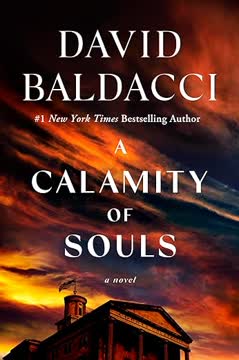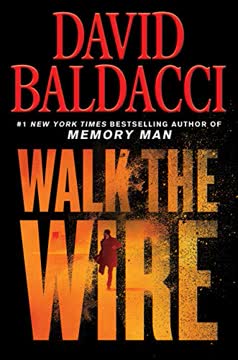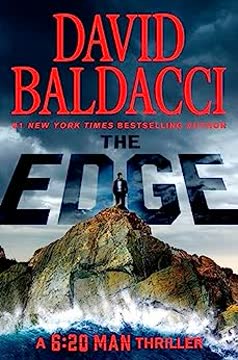Plot Summary
Violent Ends, Shattered Beginnings
In 1968 Virginia, an elderly white couple is found brutally murdered in their home. The only suspect is Jerome Washington, a Black handyman, discovered at the scene and immediately brutalized by racist deputies. The violence is not just physical but symbolic, igniting a firestorm in a community already simmering with racial tension. The crime's shockwaves ripple through the county, setting the stage for a legal and moral reckoning that will test the boundaries of justice, conscience, and the American experiment itself.
Jack Lee's Divided World
Jack Lee, a struggling white lawyer from a working-class background, is introduced as a man caught between worlds. Raised in a segregated society, Jack's family is loving but marked by hardship—his sister Lucy is mentally disabled, his parents are stoic survivors, and his own ambitions are modest. Jack's upbringing is colored by the contradictions of the South: kindness and bigotry, tradition and change. When Miss Jessup, a Black woman who once worked for his family, seeks his help for her accused son-in-law, Jack is forced to confront the limits of his own comfort and the cost of doing what's right.
Miss Jessup's Request
Miss Jessup, a formidable Black matriarch, asks Jack to defend her granddaughter's husband, Jerome, accused of murdering the Randolphs. The request is fraught: no white lawyer has ever defended a Black man in Freeman County, and the case is a lightning rod for racial animosity. Jack's initial reluctance gives way to a sense of duty, spurred by memories of Miss Jessup's quiet dignity and his own father's lessons about decency. The decision to take the case is a turning point, setting Jack on a collision course with his community, his family, and himself.
Crossing the Color Line
Jack and his father venture into the Black side of town, Tuxedo Boulevard, to meet Miss Jessup and Jerome's family. The journey is tense, marked by suspicion and the ever-present threat of violence. Jack witnesses firsthand the poverty, pride, and resilience of a community forced to the margins. The encounter is both a literal and metaphorical crossing of the color line, as Jack begins to see the world through new eyes and recognizes the depth of the injustice Jerome faces.
A Family's Quiet Struggles
Jack's family life is a tapestry of love, regret, and unspoken pain. His mother, Hilly, is haunted by guilt over Lucy's condition and the compromises she's made. His father, Frank, is a war veteran who carries his own scars and quietly supports Jack's decision, even as he fears for his son's safety. The Lees' home is a microcosm of the South: proud, wounded, and struggling to adapt to a changing world. Their story underscores the personal costs of social upheaval and the ways in which private suffering intersects with public events.
Tuxedo Boulevard's Secrets
As Jack investigates, he uncovers layers of history and prejudice embedded in Freeman County. Tuxedo Boulevard, home to the Black community and the county dump, is a symbol of systemic neglect. Miss Jessup's memories reveal a world of sharecropping, migration, and survival. The lines between Black and white, rich and poor, are both stark and porous, with moments of unexpected connection and enduring pain. Jack's growing awareness of these realities deepens his commitment to the case, even as the risks mount.
The Accused: Jerome Washington
Jerome Washington, a Vietnam veteran and family man, is introduced as both victim and symbol. Beaten by police, denied basic rights, and presumed guilty by the public, Jerome's fate seems sealed. Yet his dignity, honesty, and love for his family shine through. His story is one of resilience in the face of overwhelming odds, and his interactions with Jack reveal the deep chasm—and occasional bridges—between Black and white experience in America. The case becomes not just about guilt or innocence, but about the possibility of justice in a system designed to deny it.
A Case No One Wants
Jack's decision to represent Jerome isolates him from his peers and community. He faces threats, violence, and the scorn of both white and Black residents. The legal system is stacked against him: evidence is scant, the prosecution is relentless, and the judge is a former Klansman. The case attracts national attention, drawing in political operatives eager to exploit it for their own ends. Jack's partnership with Desiree DuBose, a brilliant Black civil rights lawyer from Chicago, offers hope but also exposes new fault lines of trust, strategy, and identity.
The Randolph Murders
The investigation reveals that the Randolphs' lives were far from idyllic. Their marriage was abusive, their finances precarious, and their relationships with their children fraught. The will's unusual tontine structure, the presence of a mysterious blue convertible, and the sudden appearance of new evidence all point to a larger conspiracy. Witnesses are bribed or coerced, and the prosecution's case is built on a foundation of manufactured guilt. The truth is elusive, and the stakes grow ever higher as the trial approaches.
The Cost of Conscience
Jack's commitment to the case exacts a heavy toll. His sister Lucy is attacked and killed in an act of racist retaliation. His home and office are burned. He is beaten, shot, and nearly killed. Desiree faces her own dangers, including an assassination attempt. The Lees' family secrets come to light, revealing hidden connections and long-buried pain. The cost of conscience is steep, and the line between heroism and martyrdom grows thin. Yet Jack and Desiree persist, driven by a sense of duty that transcends personal safety.
Desiree DuBose Arrives
Desiree DuBose, a renowned civil rights attorney, joins the defense, bringing legal acumen, strategic vision, and a deep understanding of the stakes. Her presence challenges Jack, the court, and the community. Together, they navigate a hostile legal system, confront their own biases, and forge a partnership rooted in mutual respect. Desiree's backstory—her own losses, her family's journey north, her battles in the courts—adds depth and urgency to the fight. Her arrival marks a turning point, as the defense shifts from survival to offense.
The Unraveling of Evidence
The trial is a showcase of systemic injustice: perjured witnesses, planted evidence, and a judge who bends the rules to favor the prosecution. Yet Jack and Desiree methodically dismantle the case against Jerome and Pearl, exposing the lies and coercion at its heart. Key witnesses recant, the supposed murder weapon is revealed to be a Confederate relic, and the timeline of the crime is upended. The defense's relentless pursuit of the truth forces the court—and the community—to confront the reality of their own complicity.
The Court of Public Opinion
The trial becomes a national spectacle, manipulated by politicians, activists, and the media. Howard Pickett, a wealthy Wallace supporter, seeks to use the case to stoke white resentment and further his own ambitions. The press alternately vilifies and lionizes the participants, and the community is polarized. Jack and Desiree must fight not only in the courtroom but in the court of public opinion, using every tool at their disposal to counter the tide of hatred and misinformation.
The Trial Begins
The courtroom drama is intense and unrelenting. The prosecution's case is built on innuendo, racism, and fear, while the defense counters with logic, empathy, and the power of cross-examination. The jury is all white, the judge is biased, and the outcome seems predetermined. Yet moments of courage—Pearl's refusal to be cowed, Miss Jessup's defiance, Hilly Lee's unexpected solidarity—crack the facade of inevitability. The trial becomes a crucible, testing the limits of the law and the possibilities of redemption.
Manufactured Guilt
As the trial unfolds, it becomes clear that the case against Jerome and Pearl is a carefully constructed fiction. Witnesses are bribed or blackmailed, evidence is planted, and the real motives for the murders are hidden behind a smokescreen of racial animus. The Gates family, the Randolphs' lawyer and his son, are revealed as key conspirators, manipulating events to secure their own financial gain. The defense's exposure of these machinations is both a legal triumph and a searing indictment of the system.
The Power of Testimony
The turning point comes when Christine Hanover, the Randolphs' daughter, confesses to the truth: her father killed her mother in a fit of rage, and she killed him in self-defense. The Gateses orchestrated the cover-up, framing Jerome and Pearl to protect their own interests. Christine's testimony is an act of courage and contrition, shattering the narrative of Black guilt and forcing the court to confront the reality of white violence and complicity. The charges are dropped, and Jerome and Pearl are freed—but not before the cost is exacted.
The Truth Emerges
The aftermath is bittersweet. Jerome is murdered by a white teenager in a final act of racist violence, and Jack is gravely wounded. The community is left to reckon with the consequences of its actions, and the Lees must bury another child. Desiree returns to Chicago, scarred but undaunted. Jack, after a long recovery, joins her, seeking a new beginning and a partnership rooted in shared struggle and hope. The case is both a victory and a tragedy, a testament to the possibility of change and the persistence of hate.
Justice and Its Price
The story ends with Jack and Desiree reunited, determined to continue the fight for justice in a world that remains stubbornly resistant to change. Their partnership is a fragile but real symbol of what is possible when individuals cross lines of race, class, and history to stand together. The lessons of Freeman County are clear: justice is never given, only won; the cost is high, and the work is never finished. Yet in the face of calamity, souls can still strive for something better.
Characters
Jack Lee
Jack Lee is a white, working-class lawyer whose life is shaped by the contradictions of the segregated South. Raised to be kind but not to challenge the status quo, Jack is thrust into the role of defender for a Black man accused of a heinous crime. His journey is one of awakening: from passive observer to active participant, from self-doubt to moral courage. Jack's relationships—with his family, his clients, and Desiree DuBose—are marked by empathy, vulnerability, and a growing willingness to risk everything for justice. His development is both personal and emblematic of the possibility of change in individuals and societies.
Desiree DuBose
Desiree is a Black civil rights lawyer from Chicago, renowned for her intellect, strategic acumen, and unyielding commitment to justice. Her arrival in Freeman County transforms the defense and challenges Jack to rise to her level. Desiree's backstory—her family's migration north, her own losses, her battles in the courts—infuses her with both strength and vulnerability. She is both a symbol and a fully realized character: a woman who has sacrificed much for the cause, who fears intimacy because of past trauma, but who ultimately finds in Jack a partner and friend. Her presence forces the community, and the reader, to confront the realities of race, gender, and power.
Jerome Washington
Jerome is a Black Vietnam veteran, husband, and father, whose life is destroyed by a system designed to crush men like him. His dignity, honesty, and love for his family are evident even as he is brutalized, framed, and ultimately murdered. Jerome's story is both singular and representative: he is every Black man who has faced the machinery of American injustice. His relationship with Jack and Desiree is marked by mutual respect and a shared sense of the stakes. Jerome's fate is a searing indictment of the costs of racism and the fragility of justice.
Pearl Washington
Pearl is Jerome's wife, a young Black woman whose life is marked by hardship, violence, and the constant threat of loss. Her refusal to reveal her alibi—an illegal abortion after a rape—speaks to the layers of vulnerability and stigma she faces. Pearl's strength is quiet but formidable; her love for her children and husband is unwavering. Her eventual exoneration is bittersweet, as it comes at the cost of her husband's life and her own innocence. Pearl embodies the intersection of race, gender, and class in the struggle for survival and dignity.
Miss Jessup
Miss Jessup is the formidable Black matriarch who bridges the worlds of Black and white in Freeman County. Her wisdom, resilience, and strategic acumen are central to the defense. She is both a survivor of and witness to the long history of racial violence and resistance. Her relationships—with Jack, Pearl, and the wider community—are marked by a fierce love and a clear-eyed understanding of the limits and possibilities of change. Miss Jessup's presence grounds the story in the lived experience of Black women and the power of intergenerational memory.
Hilly Lee
Hilly is Jack's mother, a woman shaped by poverty, loss, and the compromises of survival. Her guilt over Lucy's condition, her hidden past with a Black childhood friend, and her eventual solidarity with Miss Jessup reveal the complexities of white womanhood in the South. Hilly's journey is one of painful self-examination and gradual transformation. Her support for Jack, even in the face of tragedy, is a testament to the possibility of change within individuals and families.
Frank Lee
Frank is Jack's father, a World War II veteran who carries his own traumas and regrets. He is a man of few words but deep convictions, quietly supporting Jack's decision to defend Jerome even as he fears for his son's safety. Frank's relationship with his wife, his sons, and Miss Jessup is marked by a pragmatic decency and a willingness to do what is right, even when it is hard. His character embodies the complexities of white masculinity in a changing South.
Christine Hanover
Christine is the Randolphs' daughter, whose testimony ultimately exonerates Jerome and Pearl. Her journey from silence to confession is fraught with guilt, fear, and the weight of family secrets. Christine's actions are both self-serving and redemptive, revealing the tangled web of complicity and conscience that marks the white elite. Her relationship with Jack's brother, Jeff, adds a layer of personal complexity to the story.
Edmund Battle
Battle is the state's attorney general, brought in to secure a conviction and further political ambitions. Initially a zealous adversary, he is gradually forced to confront the weaknesses of his case and the moral costs of his actions. Battle's evolution—from antagonist to reluctant ally—mirrors the broader theme of the possibility of change within individuals and institutions.
Howard Pickett
Pickett is a wealthy Wallace supporter who seeks to exploit the case for political gain. He is the embodiment of white backlash, using fear, resentment, and money to stoke division and maintain power. Pickett's presence is a reminder that the struggle for justice is always entangled with larger forces of reaction and resistance.
Plot Devices
Dual Protagonists and Shifting Perspectives
The novel employs a dual protagonist structure, alternating between Jack Lee's and Desiree DuBose's perspectives. This allows for a nuanced exploration of race, gender, and class, as well as the personal and professional stakes of the case. The shifting perspectives also highlight the ways in which individual stories intersect with larger historical forces.
Legal Thriller Meets Social Drama
The plot is structured as a classic legal thriller, with the investigation, trial, and cross-examinations providing suspense and momentum. Yet the legal drama is always embedded in a broader social context: the history of segregation, the politics of the 1960s, and the personal costs of resistance. The courtroom becomes a crucible in which the possibilities and limits of justice are tested.
Manufactured Evidence and False Testimony
The prosecution's case is built on a web of lies, bribed witnesses, and planted evidence. This device serves both as a plot engine and as a commentary on the ways in which the legal system is manipulated to maintain racial hierarchies. The gradual unraveling of the conspiracy is both a legal triumph and a moral reckoning.
Foreshadowing and Symbolism
The novel uses foreshadowing—Lucy's vulnerability, the threats against Jack and Desiree, the presence of the blue convertible—to build suspense and underscore the interconnectedness of personal and public events. Symbols such as the Penny Bridge, Tuxedo Boulevard, and the Confederate bayonet serve as touchstones for the novel's themes of division, memory, and the possibility of crossing boundaries.
Testimony as Revelation
Key moments hinge on the willingness of characters—Pearl, Christine, Miss Jessup—to break silence and tell the truth, even at great personal risk. Testimony is both a legal and moral act, capable of transforming the course of the trial and the lives of those involved. The novel explores the costs and consequences of truth-telling in a world built on lies.
Analysis
A Calamity of Souls is a powerful meditation on race, justice, and the American experiment, set against the backdrop of a small Southern town in 1968. Through the intertwined stories of Jack Lee and Desiree DuBose, the novel explores the personal and collective costs of confronting systemic injustice. The legal thriller structure provides suspense and momentum, but the heart of the book lies in its nuanced portrayal of characters struggling to do what is right in a world designed to punish them for it. The novel is unflinching in its depiction of racism, violence, and the machinery of injustice, yet it also offers moments of grace, solidarity, and the possibility of change. The ultimate lesson is that justice is never given, only won through courage, sacrifice, and the willingness to cross boundaries—of race, class, and history. The story's ending, both triumphant and tragic, is a reminder that the work of justice is never finished, and that the price of conscience is high but necessary for the soul of a nation.
Last updated:
FAQ
0. Synopsis & Basic Details
What is A Calamity of Souls about?
- A Calamity of Souls Synopsis: Set in 1968 Virginia, the novel follows Jack Lee, a young white lawyer, as he takes on the seemingly impossible defense of Jerome Washington, a Black Vietnam veteran accused of murdering an elderly white couple, the Randolphs. The case quickly escalates into a national spectacle, exposing deep-seated racial prejudices, political manipulation, and a corrupt justice system. Jack partners with Desiree DuBose, a brilliant Black civil rights attorney, to uncover a conspiracy that reaches into the highest echelons of the community, forcing them to confront personal dangers and societal injustices.
- A Fight for Justice: The narrative delves into the complexities of race, class, and power in the American South during a pivotal year for the Civil Rights movement. It explores how individual lives are shaped by historical forces and how the pursuit of truth can come at an unimaginable personal cost, challenging characters to transcend their ingrained biases and fight for a more equitable world.
- Unraveling a Conspiracy: Beyond the courtroom drama, the story uncovers a web of family secrets, financial motives, and manufactured evidence designed to frame Jerome and his wife, Pearl. Jack and Desiree must navigate threats, violence, and public hostility to expose the real killers and the powerful figures orchestrating the cover-up, culminating in a bittersweet and tragic fight for justice.
Why should I read A Calamity of Souls?
- Gripping Legal Thriller: Readers seeking a compelling courtroom drama will be drawn into the intricate investigation and intense trial, where every piece of evidence and testimony is meticulously dissected. The novel masterfully builds suspense, keeping you guessing about the true culprits and the fate of the accused, making it a standout legal thriller.
- Profound Social Commentary: Beyond the plot, the book offers a powerful and unflinching exploration of systemic racism, prejudice, and the fight for civil rights in 1968 America. It challenges readers to confront uncomfortable truths about history and society, providing a deeply resonant social drama that remains relevant today.
- Rich Character Development: The novel features complex, multi-layered characters like Jack Lee and Desiree DuBose, whose personal journeys of self-discovery, moral courage, and evolving relationships are central to the story. Their struggles, sacrifices, and growth offer a deeply human perspective on the pursuit of justice, making for an emotionally engaging read.
What is the background of A Calamity of Souls?
- 1968 Civil Rights Era Setting: The novel is deeply rooted in the tumultuous year of 1968, a period marked by the assassinations of Martin Luther King Jr. and Robert Kennedy, widespread riots, and escalating racial tensions. This historical backdrop intensifies the stakes of the trial, reflecting the national struggle for racial equality and the fierce resistance to it, as highlighted by the author's note on growing up in Richmond, Virginia.
- Author's Autobiographical Elements: David Baldacci infuses the story with personal experiences, drawing from his upbringing in Richmond, Virginia, and his career as a trial lawyer. Details like Jack Lee's paper route, his mechanic father, and the busing experience reflect Baldacci's own youth, lending authenticity and emotional depth to the narrative's exploration of racial divides and personal conscience.
- Southern Segregation and Political Climate: The story vividly portrays the entrenched segregation of Freeman County, Virginia, where "separate but equal" was a de facto reality despite legal rulings. The political landscape, including the rise of figures like George Wallace and the ongoing debate over states' rights versus federal mandates, forms a crucial context for understanding the intense public and institutional opposition faced by Jack and Desiree.
What are the most memorable quotes in A Calamity of Souls?
- "Law is blind if you colored, honey. It don't see us, no how, no way.": Miss Jessup's stark observation to Jack Lee in Chapter 7 encapsulates the systemic injustice faced by Black Americans, highlighting the profound disparity between legal ideals and lived reality. This quote defines the central conflict of the novel, emphasizing the uphill battle for true equality.
- "If you let the bully win he never goes away. He owns you.": Hilly Lee's powerful words to Jack in Chapter 51, after Lucy's murder, mark a pivotal shift in her character and the novel's thematic core. It underscores the necessity of standing firm against oppression, even in the face of overwhelming personal loss and danger, resonating with the broader fight against racial injustice.
- "I pray for the day when this country moves forward together, as one mighty nation, and one united people.": Desiree DuBose's impassioned statement to the press in Chapter 69 articulates the enduring hope for unity and progress amidst division. This quote captures the aspirational vision of the Civil Rights movement, emphasizing the potential for America to live up to its founding ideals.
What writing style, narrative choices, and literary techniques does David Baldacci use?
- Immersive Historical Realism: Baldacci employs a detailed, grounded style that immerses readers in the specific social and political atmosphere of 1968 Virginia. He uses vivid descriptions of settings like Tuxedo Boulevard and Faulkner's Woods, and authentic dialogue, including regional dialects and racial slurs (addressed in the author's note), to create a palpable sense of time and place, enhancing the novel's historical realism.
- Dual Perspective & Character-Driven Narrative: The story is primarily told through the alternating perspectives of Jack Lee and Desiree DuBose, allowing for a nuanced exploration of their internal conflicts, evolving understanding of justice, and the racial dynamics at play. This narrative choice deepens reader empathy and provides a comprehensive view of the complex issues, moving beyond a simple plot-driven thriller to a character-driven social drama.
- Foreshadowing and Symbolism: Baldacci skillfully integrates symbolism, such as the decaying Penny Bridge representing forgotten history and division, or the Confederate bayonet embodying inherited prejudice, to enrich thematic depth. Subtle foreshadowing, like the early threats against Jack and Desiree, builds suspense and underscores the interconnectedness of personal and societal violence, making the narrative both thrilling and intellectually engaging.
1. Hidden Details & Subtle Connections
What are some minor details that add significant meaning?
- Hilly Lee's Hidden Past: The revelation of Hilly's childhood love for Joshua Taylor, a Black man, and her mother's subsequent disapproval (Chapter 64), subtly explains her complex, often contradictory views on race. This personal history, kept secret even from her husband, reveals the deep-seated societal pressures that shaped her, making her eventual solidarity with Miss Jessup and support for Jack's case a profound personal transformation, rather than a simple change of heart.
- The Green Book's Significance: Desiree DuBose carrying the last edition of "The Green Book" (Chapter 43) is a subtle but powerful detail highlighting the pervasive nature of Jim Crow laws and the practical dangers faced by Black travelers. It symbolizes the constant vigilance and strategic planning required for survival in a segregated society, underscoring the historical context of systemic racism that informs Desiree's unwavering commitment to justice.
- Walter Gates's Blue Convertible: The detail that Walter Gates, Curtis Gates's son, owns the only blue convertible registered in Freeman County (Chapter 82) is a crucial, almost missed clue. This seemingly minor fact connects him directly to the car Jerome saw at the Randolphs' house, subtly implicating the Gates family in the cover-up and framing of Jerome and Pearl, revealing the depth of their calculated conspiracy.
What are some subtle foreshadowing and callbacks?
- Frank Lee's PTSD and Jeff's Desertion: Frank Lee's unspoken trauma from WWII, manifested in nightmares and the hiding of his guns (Chapter 5), subtly foreshadows Jerome's own PTSD from Vietnam and Jeff Lee's eventual desertion. This parallel highlights the universal psychological toll of war, regardless of race or conflict, and creates a poignant callback when Frank later understands Jeff's decision (Chapter 61), bridging a long-standing family rift.
- Miss Jessup's "Oil and Water" Remark: Miss Jessup's early comment to Mrs. Ashby, "I got me my place and you got you your place and they's oil and they's water and they just don't mix" (Chapter 4), initially appears to be about racial separation. However, it subtly foreshadows Mrs. Ashby's suicide, which was driven by her paranoia about her husband and Miss Jessup, revealing a deeper, more personal layer of racial and social tension that ultimately proved fatal.
- Judge Ambrose's "Esteemed" Reputation: The national news magazine article praising Judge Ambrose's "thoroughly professional manner" and "great tolerance" (Chapter 78) is a stark callback to his revealed past as a KKK member. This ironic contrast subtly highlights the hypocrisy and performative nature of justice in a racially charged environment, where public perception can be meticulously crafted to mask deep-seated prejudice, making his later outburst even more damning.
What are some unexpected character connections?
- Miss Jessup and Hilly Lee's Shared Past: The revelation that Miss Jessup, whose real name is Lenore, cared for Lucy Lee when Hilly was hospitalized (Chapter 57) creates an unexpected and profound connection between the two women. This hidden history explains Hilly's complex feelings towards Miss Jessup and her eventual solidarity, transforming their relationship from one of distant respect across racial lines to a bond forged in shared vulnerability and care.
- Jeff Lee and Christine Hanover's Romance: The past romantic relationship between Jack's brother, Jeff, and Christine Hanover (Chapter 14) is an unexpected link between the working-class Lee family and the affluent Randolphs. This connection adds a layer of personal tragedy and emotional complexity to Christine's eventual confession, as her actions are implicitly influenced by her past with Jeff and her understanding of the Lee family's integrity.
- Judge Ambrose and Ronald Ashby's KKK History: The shocking detail that Judge Ambrose and Ronald Ashby were both members of the KKK in their youth (Chapter 78) creates an unexpected and disturbing connection between two seemingly disparate figures. This hidden past exposes the deep roots of institutional racism, revealing that even figures of authority like Ambrose were once actively involved in white supremacist organizations, profoundly impacting the perceived fairness of the trial.
Who are the most significant supporting characters?
- Miss Jessup (Lenore): Beyond her role as Jerome's advocate, Miss Jessup serves as a moral compass and a living repository of Black history and resilience. Her past as a sharecropper (Chapter 26), her personal losses due to racism (Chapter 58), and her unexpected connection to Hilly Lee (Chapter 57) make her a powerful symbol of enduring strength and quiet defiance, influencing both Jack and Hilly's understanding of justice.
- Jeff Lee: Jack's younger brother, a decorated Green Beret and Vietnam deserter, is crucial for his military expertise and moral stance. His identification of the Confederate bayonet (Chapter 79) dismantles a key piece of prosecution evidence, while his willingness to protect Christine (Chapter 75) and his eventual return to fight for his family (Chapter 59) highlight themes of loyalty, courage, and the complex aftermath of war.
- Ronald Ashby: The elderly, reclusive lawyer, initially a symbol of the old Southern elite, becomes a surprising source of truth. His confession about his KKK past with Judge Ambrose and his personal history with Miss Jessup (Chapter 78) provides critical information that exposes the systemic corruption and hidden prejudices within Freeman County, challenging Jack's assumptions about his community.
2. Psychological, Emotional, & Relational Analysis
What are some unspoken motivations of the characters?
- Hilly Lee's Protective Instincts: Hilly's initial fierce opposition to Jack defending Jerome (Chapter 17) is driven by an unspoken fear for her family's safety and reputation, stemming from her own past experiences with prejudice and loss. Her deep-seated desire to protect her children, especially after Lucy's condition, makes her wary of any action that could invite further calamity, revealing a mother's complex motivations.
- Desiree DuBose's Personal Vengeance: Desiree's relentless drive for justice is fueled by the unspoken trauma of her fiancé, Paul's, murder (Chapter 93), a direct consequence of her civil rights work. This personal loss, which she rarely discusses, provides a powerful, underlying motivation for her unwavering commitment to dismantling systemic racism, transforming her professional mission into a deeply personal quest for accountability.
- Edmund Battle's Moral Compromise: Battle's internal conflict, hinted at by his son Brett's work in Civil Rights (Chapter 30) and his eventual honesty with Desiree (Chapter 56), suggests an unspoken moral struggle beneath his ambitious exterior. His willingness to compromise on the plea deal, despite political pressure, reveals a man grappling with his conscience, torn between professional advancement and a nascent recognition of justice.
What psychological complexities do the characters exhibit?
- Jack Lee's Moral Evolution: Jack exhibits the psychological complexity of a man grappling with inherited prejudice and a burgeoning sense of justice. His initial reluctance and fear (Chapter 10) give way to courage, but he constantly questions his own motives and capabilities, confessing, "I'm no Atticus Finch" (Chapter 41). This internal struggle, marked by self-doubt and a growing awareness of his privilege, showcases a realistic psychological journey of moral awakening.
- Hilly Lee's Contradictory Empathy: Hilly's character is psychologically complex, displaying both ingrained racial prejudice ("We don't really know her kind," Chapter 3) and profound empathy (nursing Black families, grieving Dr. King, her past with Joshua). This internal contradiction stems from her hardscrabble upbringing and personal traumas, revealing how deeply societal norms can conflict with individual compassion, creating a nuanced portrayal of a woman wrestling with her own beliefs.
- Pearl Washington's Shame and Resilience: Pearl's psychological state is marked by the profound shame and fear surrounding her rape and illegal abortion (Chapter 49), which she initially refuses to disclose. This complexity highlights the layers of vulnerability and stigma faced by women, particularly Black women, in a society that offers little protection or understanding. Her eventual confession, driven by a desire to save her husband, demonstrates immense resilience and sacrifice.
What are the major emotional turning points?
- Lucy's Murder: The brutal murder of Jack's sister, Lucy, in retaliation for his defense of Jerome (Chapter 51), is a devastating emotional turning point. It shatters the Lee family's world, transforming Hilly's passive prejudice into fierce resolve ("You are not walking away from this," Chapter 51) and solidifying Jack's commitment to the case, making the fight for justice deeply personal and emotionally charged.
- Christine Hanover's Confession: Christine's emotional confession on the stand, revealing her father's abuse and her own act of self-defense (Chapter 90), is a pivotal moment of truth and catharsis. This raw, honest testimony unravels the entire prosecution's case, shifting the emotional weight of the narrative from Black guilt to white complicity and violence, and offering a glimmer of redemption amidst tragedy.
- Desiree's Near-Assassination: The attempt on Desiree's life at the hotel (Chapter 43) is a stark emotional turning point, forcing her to confront her own mortality and the extreme dangers of her work. This event deepens her bond with Jack, as he insists on protecting her, and reinforces her resolve, transforming her professional dedication into a more urgent, life-or-death struggle for survival and justice.
How do relationship dynamics evolve?
- Jack and Desiree's Partnership: Their relationship evolves from a cautious, almost adversarial professional alliance to a deep, mutually respectful partnership, and eventually, a nascent romantic connection. Initially, Jack is intimidated by Desiree's brilliance, and she is skeptical of his commitment, but shared dangers and a common cause forge an unbreakable bond, culminating in their decision to practice law together in Chicago (Chapter 93), symbolizing a new path forward.
- Hilly and Miss Jessup's Reconciliation: The dynamic between Hilly Lee and Miss Jessup transforms from distant, racially defined interactions to a profound, empathetic connection. Hilly's revelation of her past love for Joshua Taylor and Miss Jessup's care for Lucy (Chapter 57) bridge their racial divide, leading to a moment of shared grief and understanding at Lucy's funeral, symbolizing the potential for personal reconciliation across societal barriers.
- Frank Lee and Jeff's Healing Rift: The strained relationship between Frank Lee and his son Jeff, caused by Jeff's desertion from Vietnam, begins to heal through shared trauma and renewed understanding. Frank's re-reading of Jeff's letter (Chapter 61) and his apology ("It's a lot harder to walk away from a fight that ain't the good fight," Chapter 61) allows them to reconnect, demonstrating how shared values and empathy can mend deep family wounds.
3. Interpretation & Debate
Which parts of the story remain ambiguous or open-ended?
- The Future of Jack and Desiree's Relationship: While Jack and Desiree decide to open a law firm together in Chicago, the romantic nature of their relationship remains open-ended. Desiree explicitly states, "it can't ever be more than that" (Chapter 93), due to her past trauma, but Jack challenges her certainty. This ambiguity leaves readers to ponder whether their professional alliance will evolve into a deeper personal bond, or if Desiree's emotional scars will forever limit their connection.
- The Extent of Systemic Change: Despite the legal victory for Jerome and Pearl (before Jerome's murder), and the exposure of corruption, the novel leaves the broader question of systemic change ambiguous. Jack's impassioned speech to the press (Chapter 91) expresses hope, but Jerome's immediate murder by a white teenager underscores the persistence of hate. This ending prompts debate on whether individual legal victories can truly dismantle deeply entrenched racism, or if progress is always met with violent backlash.
- The Long-Term Impact on Freeman County: While the immediate perpetrators of the frame-up are arrested, and Christine confesses, the novel doesn't fully detail the long-term societal impact on Freeman County. The lingering presence of figures like Howard Pickett and the continued racial animosity suggest that true transformation will be a slow, arduous process, leaving readers to question how deeply the community will reckon with its exposed prejudices and whether genuine healing can occur.
What are some debatable, controversial scenes or moments in A Calamity of Souls?
- **Judge Ambrose's KKK Past and
Review Summary
A Calamity of Souls is a powerful and emotionally charged legal thriller set in 1968 Virginia, exploring themes of racial injustice and civil rights. Readers praise Baldacci's compelling storytelling, well-developed characters, and authentic portrayal of the era's tensions. The novel follows white lawyer Jack Lee and Black lawyer Desiree DuBose as they defend a wrongly accused Black man. While some found the book heavy-handed in its messaging, most reviewers consider it one of Baldacci's best works, praising its gripping courtroom scenes and thought-provoking narrative.
Download PDF
Download EPUB
.epub digital book format is ideal for reading ebooks on phones, tablets, and e-readers.













